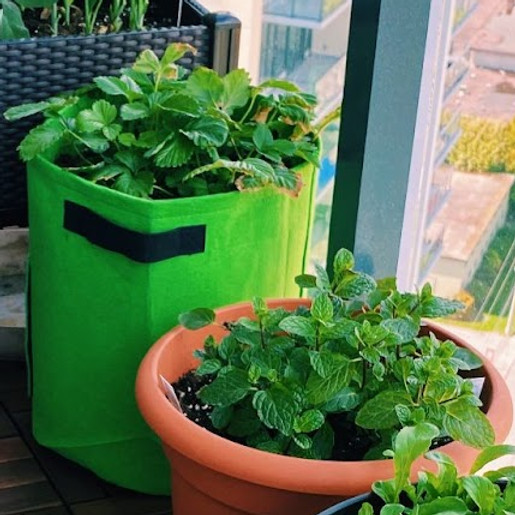
Vermis. (WIP)
Unlock the Power of the Worm.
Specific description TBD
The Ask:
"Explore various systems and categories that relate to food to develop an innovative product that is designed sustainably and/or addresses a sustainability issue."
The Answer:
Vermis: A product family centered around vermicomposting that addresses wasted food by acting as an accessible gateway to more sustainable food waste practices.
Skills Developed:
- Design Research + Thinking
- Design Visualization
Background
Food Waste: Why Care
Food waste accounts for roughly 8% of total global greenhouse gas emissions, with the US wasting approximately 30-40% of its food supply annually.
That equates to about 88.7 million tons of food, or roughly 38% of the country's total food supply, or 150,000 tons per day.
That's enough to fill 1500 Olympic Swimming Pools a day.


How Can We Introduce More Comprehensive Food Waste Education to Successfully Promote Sustainable Food Practices?
Composting.

Trash To Treasure
Why Compost?
-
Environmental Benefits: Cuts methane emissions & captures carbon.
-
Waste Reduction: Keeps organic waste out of landfills.
-
Soil Health: Enriches soil, fights erosion, & fuels plant growth.
-
Economic Advantages: Trims waste costs and chemical fertilizer dependence.
-
Supports Sustainable Practices: Drives green jobs and circular economy.
-
Climate Resilience: Strengthens soil against droughts/floods.
The Problem
Why Do People Not Use Composting?
-
Lack of Knowledge: Unfamiliarity with composting creates fear of failure.
-
Lack of Time: Perception of time needed to compost or get results.
-
Limited Space: Challenging for those in urban & metropolitan areas.
-
Inconvenience: Perceived additional effort compared to traditional disposal.
-
Odor + Pests: Fear of attracting vermin or smelling rot.
-
Apathy: Disinterest or undervaluing composting benefits.
Composting is perceived as intimidating, "only for those with expertise, a large amount of space & time, or a green thumb".




Identifying a Solution
Unlocking Accessible Composting.
By identifying existing solutions, we can discern a straightforward, easy-to-adopt composting method with the potential to lower the barriers of entry to composting, particularly for individuals and small families in metropolitan or urban settings.
Available Options
What Are Some Composting Methods?




Open Air Composting
Pros:
-
Low barrier-of-entry + cost
-
Large capacity
Cons:
-
Requires outdoor space
-
May attract pests
Best For:
Those with yard space & a mix of green and brown materials
Tumbler Composting
Pros:
-
Speeds up decomposition
-
Keeps pests out
Cons:
-
Requires large amount of space + active attention
Best For:
Those with some outdoor space who want faster results
Bokashi Composting
Pros:
-
Compact
-
Usable Indoors
Cons:
-
Continuous purchase of special bran/spray
-
More active management
Best For:
-
Small households
-
Meat and dairy composting
Vermicomposting
Pros:
-
Usable indoors + versatile scale
-
Produces year-round compost
Cons:
-
Requires temperature + moisture control for odor
-
Limited to certain food scraps
Best For:
-
Apartment dwellers
-
Those on-the-go
Power of the Worm
What is Vermicomposting?
Vermicomposting is a composting method that uses worms to break down food waste into nutrient-rich compost to be used in soil.
For those seeking a versatile, low-maintenance, and space-efficient composting method, vermicomposting stands out as the superior choice.
How it Works
Vermicomposting Process
-
Setup Vermicompost Bin
-
Prepare Bedding
-
Add Worms
-
Feed Worms
-
½ the weight of the worms
-
1-2 times a week
5. Maintain + Adjust Conditions
6. Harvest + Use Compost
-
Worm Tea (Liquids)
-
Worm Castings (Solids)
7. Repeat Steps 4-6


Vermicompost Applications
Worm Tea: Liquid Gold
There are many applicable benefits to why one would want to vermicomposting, including:
-
Space Efficiency
-
Year-long High-Quality Compost & Fertilizer Yield
-
Reduces Waste + Greenhouse Gas Emissions
-
Cost Effectiveness
-
Easy Maintenance
-
Versatility + Scale
The star of Vermicomposting is its "liquid gold" compost, or “worm tea”, a nutrient-rich vitamin boost for houseplants, flowers, window boxes, & urban gardens that enriches soil, boosts growth, and naturally repels pests without the need of chemical fertilizer:
It's Sustainable Magic in a Bottle.



Benchmarking
Indoor Bins: What's Out There?




$$
VIVOSUN Worm Compost Bin
Pain Points:
-
Poor Moisture Management
-
Odor Issues
-
Temperature/Ventilation Flaws
-
Aesthetic Issues
$$$
Maze Worm Farm
Pain Points:
-
Poor Moisture Management
-
Odor Issues
-
Messiness
-
Lack of Easy Drainage
$$
Hot Frog Essential Living Composter
Pain Points:
-
Durability Concerns
-
Odor Issues
-
Poor Moisture Management
-
Worm Migration Issues
Can-O-Worms
$$$
Pain Points:
-
Odor + Mold Issues
-
Worm Migration Issues
-
Poor Moisture Management
-
Aesthetic Issues
None Truly Belong Indoors.
Proposal
Design Opportunity.
A product family addressing wasted food by acting as an accessible gateway to more sustainable food waste practices, comprised of 3 user-centered solutions:
1. Semi-automated Full-scale Vermicompost System:
-
Redesigned to fit in modern urban indoor environments while promoting low-commitment passive monitoring, as well as integrating proper aeration & odor reduction features.
2. Countertop Beginner Vermicompost System:
-
Lowers the barrier of entry with a compact, approachable design for first-time users exploring sustainable food practices.
3. Compost/Food Waste Collection Bin:
-
Designed with portability in mind, it collects either pre-compost food scraps or the castings after a compost cycle.




Personae
Target Market Representation.

Emily Meyers
Location: Brooklyn, New York
Living Situation: Couple in a cramped apartment
Needs:
-
Space efficiency: low footprint
-
Easy to set up
-
Compost for house plants


Carlos Rodriguez
Location: Chicago, Illinois
Living Situation: Family of 3 in a larger flat
Needs:
-
Low odor + mess
-
Easy to use + maintain
-
Compost for balcony garden
-
Affordable


Priya Jensen
Location: Seattle, Washington
Living Situation: Alone in small condo
Needs:
-
Aesthetically pleasing
-
Space efficiency: low footprint
-
Compost for Community Garden

Application: Small Compost System
Application: Large Compost System
Application: Compost Collection Bin

















































